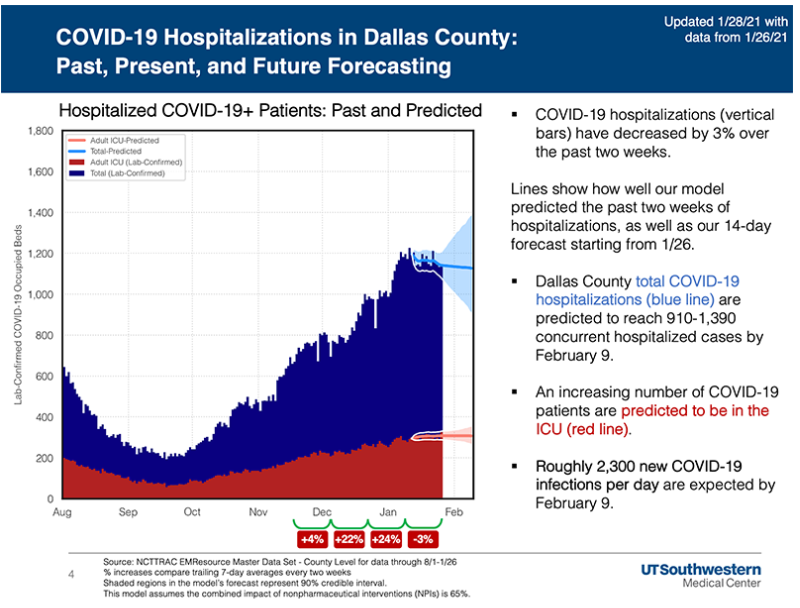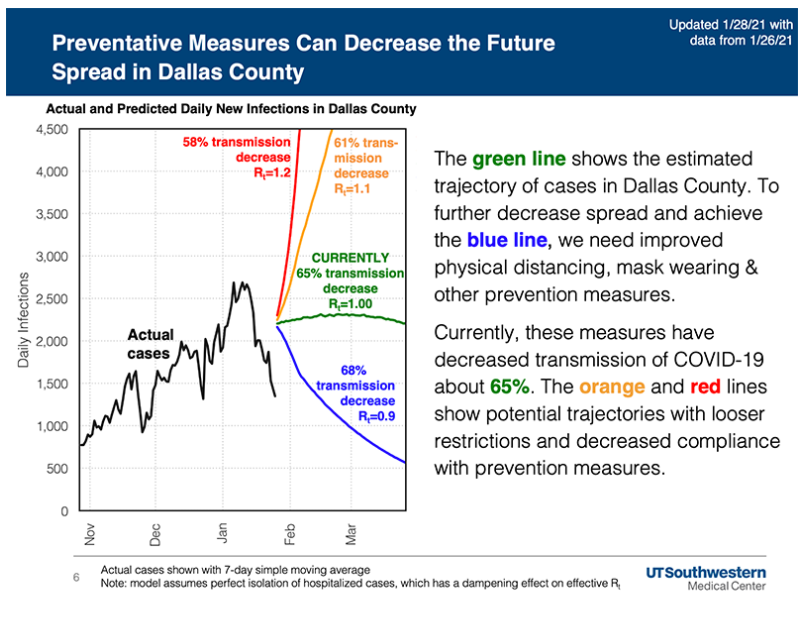After Record High Cases Comes Record High Deaths
What does it mean when we say “death is a lagging indicator” when it comes to COVID-19?
For several reasons, spikes in death counts follow spikes in COVID-19 cases. A month ago, we were seeing upwards of 2,500 to 3,000 cases a day. Now, we’re seeing daily death counts range anywhere from 10 a day to last Wednesday’s record 40.
Part of the reason is that it takes anywhere from two weeks to a couple of months for people to become sick enough with the virus to die. Another reason? There can be a bit of a lag between the time the person dies and the time all that paperwork becomes data.
Back in July, researchers at Harvard made a visualization to demonstrate what the lag looked like.
“The animation shows that deaths often occur 2-8 weeks after the onset of COVID-19 symptoms,” they said.

The good news is that new cases have gone down significantly in the past few weeks. The bad news is that they’re still coming in at a rate of anywhere from 1,400 a day to 1,800 or more.
From Friday to Sunday, a total of 3,981 new confirmed cases of the novel coronavirus were reported by Dallas County health officials over the weekend, and an additional 852 probable cases were reported, along with 62 deaths.
On Friday, the county reported 1,809 cases (1,494 confirmed cases and 315 probable) and 30 deaths, on Saturday 1,407 cases (1,170 confirmed and 237 probable) and 20 deaths, and on Sunday, 1,617 cases (1,317 confirmed and 300 probable) and 12 deaths.
Among the dead are a Dallas man in his 30s who died in a hospital emergency room, two Dallas men in their 40s, a Duncanville woman in her 40s who was found dead in her home, a Garland woman in her 40s, a Cedar Hill man in his 40s, an Irving woman in her 50s who was found dead in her home, a Grand Prairie man in his 50s who was found dead at his home, a Dallas woman in her 50s who was found dead at her home, a Mesquite man in his 50s who was found dead at his home, a Grand Prairie man in his 50s, a Dallas man in his 50s, a Grand Prairie woman in her 60s, a Farmers Branch woman in her 60s who was found dead at home, a Farmers Branch man in his 60s, a Dallas woman in her 60s, an Irving woman in her 60s, a Richardson woman in her 60s, a Lancaster man in his 60s who was found dead in his home, and four Dallas men in their 60s (one was found dead in his home).
Also among the dead are four Dallas men in their 70s (one was found dead in his home), two DeSoto women in their 70s, a Duncanville woman in her 70s, two Dallas women in their 70s, a Garland man in his 70s, a Farmers Branch man in his 70s, two Grand Prairie women in their 70s, an Irving man in his 70s, a Dallas woman in her 70s who died in a local ER, a Mesquite man in his 70s, a Lancaster man in his 80s, an Irving woman in her 80s, a Mesquite woman in her 80s, a Coppell woman in her 80s, a Dallas woman in her 80s, a Dallas man in his 80s, two Dallas women in their 90s, and a Mesquite woman in her 90s.
There are 113 active long-term care facility outbreaks. A cumulative total of 3,776 residents and 2,149 healthcare workers in long-term facilities in Dallas have been diagnosed with COVID-19.
Of these, 798 have been hospitalized and 436 have died. About 22% of all deaths reported to date have been associated with long-term care facilities, including a man in his 60s who died in an Irving facility, a woman in her 70s who died in hospice care and lived in a Mesquite facility, a man in his 70s who died in a Garland facility, a woman in her 70s who died in a Grand Prairie facility, a woman in her 70s in hospice care who lived in a Dallas facility, a woman in her 80s who died in a Dallas facility, a woman in her 80s who died in a Mesquite facility, a man in his 90s who lived in an Irving facility, a man in his 90s who died in a Dallas facility, and three women in their 90s who died in Dallas facilities.
“Today we report 1,407 new COVID cases and 20 deaths. With 183 deaths, this ends our deadliest week of COVID thus far, and as we said last year, January and February will be our darkest months,” Dallas County Judge Clay Jenkins said Saturday. “While we mourn for those who have been lost to COVID and send our thoughts and prayers to all those who are sick, we are seeing a dip in the number of new infections due to your good decisions and we must continue with that slight progress. It’s up to all of us to do everything we can to keep ourselves, our loved ones, our community, and our country a little bit stronger in these difficult times.”
The county said that the number of COVID-19 hospitalizations Friday was 989 patients. Emergency room visits for COVID-19 symptoms represented about 20% of all ER visits, according to information reported to the North Central Texas Trauma Regional Advisory Council.

UT Southwestern’s latest forecast projects that by Feb. 9, Dallas County hospitals could see concurrent hospitalizations rise to between 910 and 1,390 cases, with roughly 2,300 new cases per day on average.

According to trackers provided by Dallas ISD and Highland Park ISD, cases of COVID-19 are continuing to crop up at schools. On Friday, Dallas ISD’s COVID-19 dashboard indicated that there were have been 3,828 cases throughout the district – 1,900 among campus staff, 405 among central staff, and 1,523 among students.
Highland Park ISD is reporting 13 staff cases and 40 student cases (six among four of the five elementary schools, eight at the middle schools, and 26 at Highland Park High School). Neither district provides information on how many students and staff have quarantined due to classroom exposure to the virus.
Over the past month, there have been 9,471 COVID-19 cases in school-aged children and staff reported from 733 separate K-12 schools in Dallas County.
A total of 420 children in Dallas County under 18 years of age have been hospitalized since the beginning of the pandemic, including 32 patients diagnosed with Multisystem Inflammatory Syndrome in children (MIS-C). Over 80% of reported MIS-C cases in Dallas have occurred in children who are Hispanic or Latino or Black.









